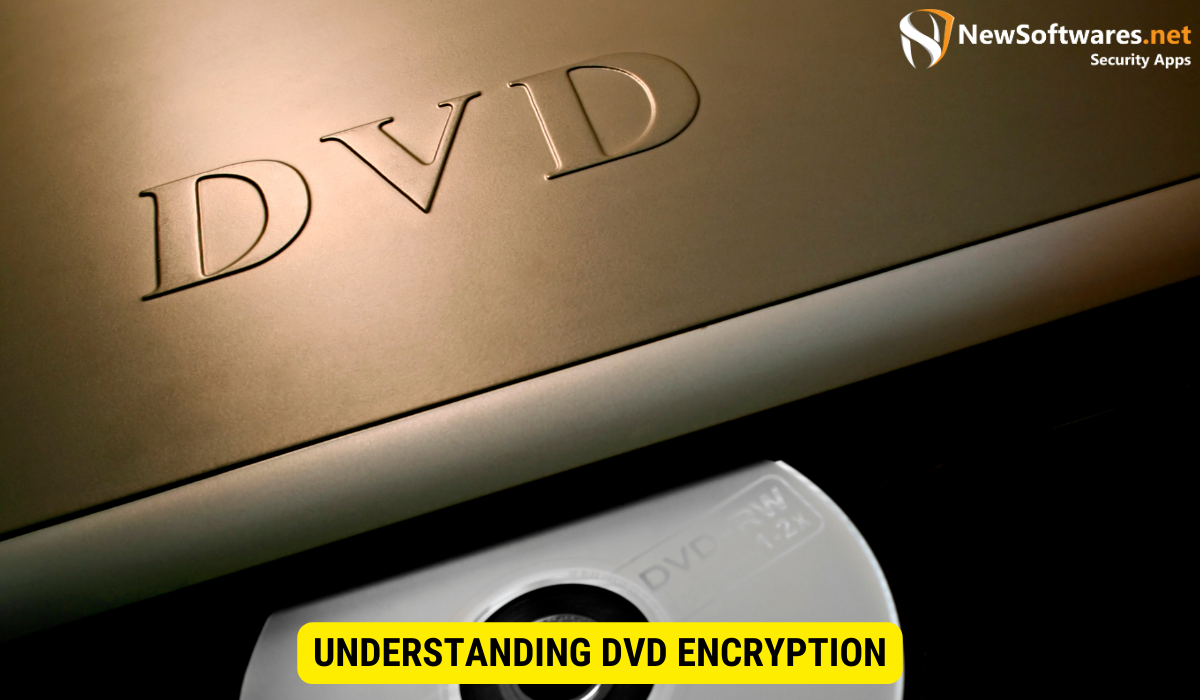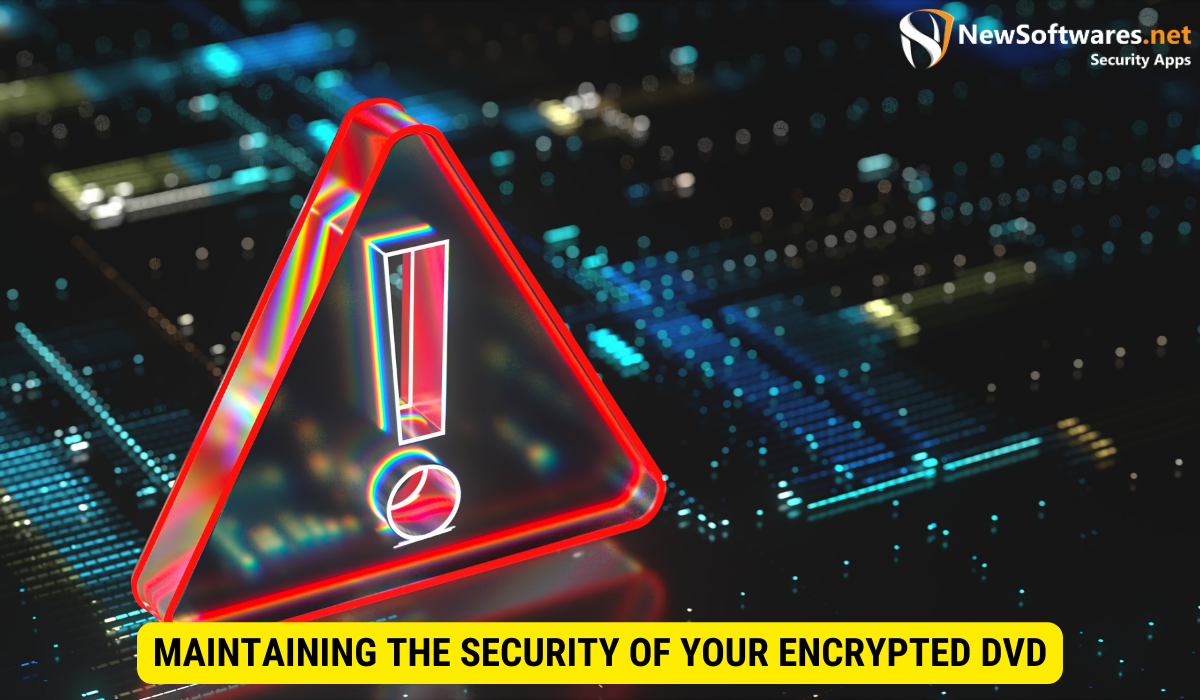Saving data on an encrypted DVD is a crucial step in safeguarding sensitive information. DVD encryption scrambles data, making it accessible only with the correct decryption key. Organize your files, choose suitable encryption software, and follow these steps: install the software, encrypt your data, and burn it to the DVD. Avoid common mistakes like neglecting compatibility and verifying data post-encryption. Regularly update your encryption software and store your encrypted DVDs securely to maintain data protection.
In today’s digital age, data security is of utmost importance. With the increase in cyber threats and the potential for unauthorized access to confidential information, it is crucial to protect your data from falling into the wrong hands. One effective method of safeguarding your data is by saving it on an encrypted DVD. In this article, we will explore the process of encrypting your DVD and saving your important data securely.
Understanding DVD Encryption

Before we delve into the process of saving data on an encrypted DVD, let’s first understand what DVD encryption is. DVD encryption is a method of encoding data on a DVD to prevent unauthorized access. It essentially scrambles the contents of the DVD so that it can only be accessed by individuals with the encryption key. By encrypting your DVD, you add an extra layer of security to your information, ensuring that even if the DVD falls into the wrong hands, the information remains protected.
What is DVD Encryption?
DVD encryption is the process of encoding the data stored on a DVD so that it is not accessible without the proper decryption key. This encryption ensures that the contents of the DVD cannot be read or copied by unauthorized individuals.
When a DVD is encrypted, the data is transformed using complex algorithms that make it virtually not possible for anyone without the encryption key to decipher the information. This encryption process involves converting the data into a format that is unreadable to anyone who does not possess the input to unlock it.
There are different types of DVD encryption methods, including Content Scramble System (CSS), Advanced Encryption Standard (AES), and Digital Rights Management (DRM). Each method employs its own set of algorithms and security measures to protect the data on the DVD.
One of the most widely used DVD encryption methods is CSS. CSS is a digital rights management system with the purpose to prevent unauthorized copying of DVDs. It uses a combination of encryption and decryption keys to protect the content on the DVD. When a DVD is encrypted with CSS, it can only be played on devices that have the necessary decryption keys.
Importance of Encrypting Your DVD
Encrypting your DVD is essential for protecting sensitive information. Whether you are storing personal files, business data, or confidential documents, encrypting the DVD adds an extra layer of security. This prevents unauthorized individuals from accessing and potentially misusing your data, helping to maintain the privacy and integrity of your information.
When you encrypt a DVD, you ensure that only allowed individuals can access the data stored on it. This is particularly important when it comes to sensitive information, for example financial records, medical records, or legal documents. By encrypting your DVD, you reduce the risk of data breaches & unauthorized access, safeguarding your information from potential threats.
Furthermore, encrypting your DVD can also help you comply with various data protection regulations. Many industries, for instance healthcare and finance, have strict guidelines regarding the protection of sensitive data. Encrypting your DVD can help you meet these requirements and avoid potential penalties for non-compliance.
Overall, DVD encryption is a crucial step in ensuring the security and privacy of your data. By encrypting your DVD, you can have peace of mind knowing that your information is safe from unauthorized access and potential misuse.
Preparing Your Data for Encryption
Before you can save your data on an encrypted DVD, some preparatory steps need to be taken to ensure a smooth and successful process.
Encrypting your data is an essential step in protecting sensitive information from unauthorized access. Whether it’s personal files, financial records, or confidential business data, encryption provides an extra layer of safety that can give you peace of mind.
However, before you embark on the encryption process, there are a few important considerations to keep in mind. By following these steps, you can ensure that your data is well-organized, properly encrypted, and easily accessible when needed.
Organizing Your Files
Prior to the encryption process, it is recommended to organize your files and data in a logical and structured manner. This will make it easier to locate particular files when needed and ensure that all necessary information is included on the DVD.
Imagine having a jumble of files scattered across your computer, with no clear organization or categorization. It would be like searching for a needle in a haystack when you need to get back a specific file. By taking the time to organize your files into separate folders based on different categories, you can streamline the organization process and save yourself valuable time and effort.
For instance, you can make separate folders for personal documents, work-related files, multimedia files, and any other relevant categories that suit your needs. This way, you can easily find the files or folders you need without having to sift through a cluttered mess of data.
Choosing the Right Encryption Software
Selecting the appropriate encryption software is crucial for the successful encryption of your DVD. Ensure that the software you choose is well-matched with your operating system and provides adequate encryption algorithms to protect your data.
With the plethora of encryption software options available in the market, it can be vast to choose the right one for your specific needs. However, taking the time to research different software options & reading reviews can help you make an knowledgeable decision.
Consider factors such as the software’s reputation, user-friendliness, encryption strength, and additional features it offers. Look for software that has been tested and proven to provide reliable encryption, ensuring that your data remains secure even in the face of potential threats.
Remember, encryption is only as strong as the software used to implement it. By choosing a reputable and reliable encryption software, you can safeguard your data effectively and minimize the risk of unauthorized access.
By following these preparatory steps, you can ensure that your data is well-organized and protected through encryption. Remember, the security of your data is in your hands, and taking the necessary precautions is essential to safeguarding your valuable information.
Step-by-Step Guide to Saving Data on an Encrypted DVD
Now that you have organized your files and selected the encryption software of your choice, let’s walk through the process of saving data on an encrypted DVD.
Installing Encryption Software
The initial step is to install the chosen encryption software on your computer. Follow the installation directives provided by the software manufacturer. Once installed, ensure that the software is running properly and ready for use.
Encrypting Your Data
With the encryption software installed, you can now proceed to encrypt your data. Open the encryption software and select the files and folders you wish to encrypt. Follow the software’s prompts to apply the encryption algorithms and generate the encryption key. Remember to choose a strong and secure encryption key that is not easily guessed.
Burning Your Encrypted Data to DVD
After encrypting your data, it is time to burn it onto the DVD. Ensure that you have a empty DVD available and a compatible DVD burner. Open the DVD burner software and follow the instructions to select the encrypted files and initiate the burning process. Once the burning is complete, your data will be securely saved on the encrypted DVD.
Common Mistakes to Avoid When Encrypting DVDs
While the process of encrypting DVDs is relatively straightforward, there are common mistakes that should be avoided to ensure the security of your data.
Overlooking Software Compatibility
One mistake to avoid is overlooking the compatibility of the encryption software with your operating system. Ensure that the software you choose is well-matched to avoid any technical issues or compatibility errors during the encryption process.
Neglecting to Verify the Data Post-Encryption
After encrypting your data and saving it on the DVD, it is crucial to verify the data to ensure that the encryption process was successful. Verify that all files are intact and accessible using the encryption key. This step is essential for detecting any errors or corruption in the encrypted data.
Maintaining the Security of Your Encrypted DVD

Once you have successfully saved your data on an encrypted DVD, it is important to maintain its security to ensure the integrity and confidentiality of your information.
Proper Storage of Encrypted DVDs
Avoid storing your encrypted DVDs in easily accessible or conspicuous locations. Consider using a secure safe or lockable cabinet to store your DVDs, reducing the risk of theft or unauthorized access.
Regularly Updating Your Encryption Software
To stay ahead of emerging security threats, it is essential to regularly update your encryption software. Software updates often include patches and bug fixes that address vulnerabilities and improve the performance of the encryption algorithms. Regularly check for updates & install them promptly to ensure the ongoing security of your encrypted DVDs.
Key Takeaways
- Encrypting your DVD adds an extra layer of security to your data, preventing unauthorized access.
- Organize your files and select the appropriate encryption software before the encryption process.
- Follow the step-by-step guide to install the encryption software, encrypt your data, and burn it onto the DVD.
- Avoid common mistakes such as overlooking software compatibility and neglecting to verify the data post-encryption.
- Maintain the security of your encrypted DVD by storing it properly and regularly updating your encryption software.
Frequently Asked Questions
Can I access the encrypted data on the DVD without the encryption key?
No, encrypted data can only be accessed with the proper encryption key. Without the key, the data remains encrypted and inaccessible.
Can I use any DVD burner software to burn the encrypted data onto the DVD?
It is recommended to use the DVD burner software that is provided by the encryption software manufacturer. This ensures compatibility and a seamless burning process.
What happens if I forget the encryption key for my DVD?
If you forget the encryption key, it is highly unlikely that you will be able to access the encrypted data. It is crucial to keep your encryption key in a safe and accessible location.
Can encrypted DVDs be copied or duplicated?
While it is technically possible to copy encrypted DVDs, the copied version will still require the encryption key for access. Encryption ensures that the information remains protected even if the DVD is duplicated.
Are encrypted DVDs compatible with all DVD players?
Encrypted DVDs may not be compatible with all DVD players. It is recommended to test the compatibility of the encrypted DVD with different players and ensure that they support the decryption process.
Conclusion
By following the step-by-step guide and implementing the recommended security measures, you can save your data on an encrypted DVD and protect it from unauthorized access. Remember to organize your files, choose the right encryption software, and regularly update your encryption software to maintain the security of your encrypted DVDs. By taking these precautions, you can have peace of mind knowing that your sensitive information is safeguarded.
